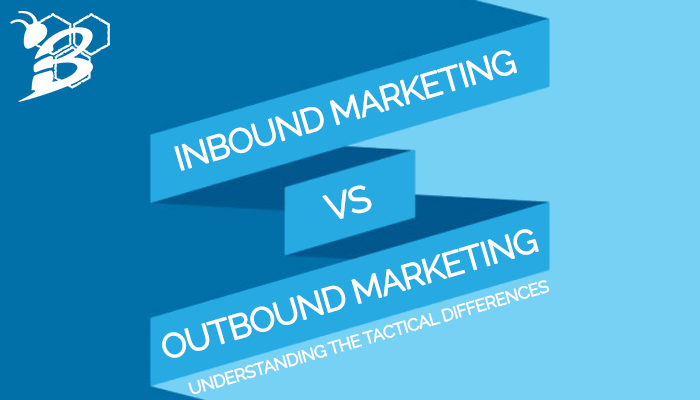There are hundreds of different marketing tactics and deciding which are best for your business can be completely overwhelming. But, despite the sheer number of tactics available to us as marketers, there are actually just two overall types of marketing. Makes life sound a little easier, right? The two different types of marketing are inbound marketing and outbound marketing. Let's take a look at the tactics that fall under each umbrella and when each type is most effective.
Outbound Marketing
Definition
Outbound marketing is a strategy in which marketers attempt to reach potential customers through the use of traditional marketing tactics. These tactics are what some used to refer to as “push” tactics meaning that the marketer is pushing information to the consumer in the hopes that the consumer will take action. The easiest way to think about outbound marketing is any marketing in which you are going out into the world and distributing your message to people.
Tactics
As outlined above, outbound marketing is made up primarily of traditional tactics. This is because these types of tactics are mass messaging platforms that allow you to distribute your message to a large audience of people at once. So, again, you are pushing your message out into the world.
Some outbound marketing tactics include, but are not limited to:
- TV
- Direct mail
- Billboards
- Events
- PR
When to use outbound marketing
Outbound marketing is most effective when you are trying to get an overall branding message out to a large audience. Due to the mass media nature of outbound marketing tactics, you want to make sure that your message appeals to the largest possible audience. In addition, since your targeting is limited your audience might not know much about your company before seeing your message, therefore you want to make sure that you're providing them with high-level information so they understand who you are and what you are all about.
Inbound Marketing
Definition
Tactics
Inbound marketing is made up primarily of digital tactics. Digital marketing affords us the opportunity to better target specific personas with specific messages and determine whether they are qualified leads for our companies. In addition, when prospective customers are looking for information that a company might be able to help with, chances are that the internet will be one of their first (if not their very first) stop. If we are able to identify some of the keywords and problems that prospective customers are searching for, we will be able to bring them in to us during the awareness stage of the buyers journey rather than having to push our message out to them.
Some inbound marketing tactics include, but are not limited to:
- Email marketing
- Social media
- Blogging
- SEO
- PPC
- Landing pages
- Calls-to-action
When to use inbound marketing
By contrast, inbound marketing is most effective when you are trying to focus on specific personas and drive and develop qualified leads. Due to the amount of information online, consumers are conducting more research online before reaching out to a company than ever before. In fact, online buyers go through about 57% of the buying cycle on their own without talking to sales. This means that buyers are no longer directly contacting a company for information about a specific problem, service or product. Instead, they are researching that problem, service or product online and completing more than 1/2 of their buying journey before reaching out to a company. Their decision is nearly made once they've reached out to a company. This is an opportunity we, as marketers can't afford to miss out on. Inbound marketing tactics allow us to develop content that will help buyers through that 57% of the buying cycle on their own. Using keyword-focused content, we are able to bring them in to consume our content on their own and complete that portion of the buying cycle.
You may have heard that outbound marketing is dead or that inbound marketing is eliminating the need for outbound marketing entirely. That's not necessarily true. Instead, research indicates that outbound marketing is more effective for overall branding messages and inbound marketing is more effective for driving qualified leads that eventually convert into sales. Marketing trends and best practices are leading more and more companies to invest more in inbound vs. outbound marketing but there are definite pros and cons for each type and reasons that you might use each (or a combination of both!). It really just depends on what business and marketing goals you're trying to accomplish.



.png?width=100&height=100&name=The%20Complete%20Guide%20to%20HubSpots%20Prospecting%20Agent%20(2025%20Edition).png)

.png?width=100&height=100&name=Why%20Were%20Not%20a%20Marketing%20Agency%20(And%20What%20That%20Means%20for%20Your%20Growth).png)